The art of reading a crochet diagram is a method I prefer over reading written words. It's like teaching yourself hieroglyphics but for crochet. The symbols mean something and are a language all to itself. For myself, my first crochet book, when I was fourteen, had written words and diagrams for each pattern.
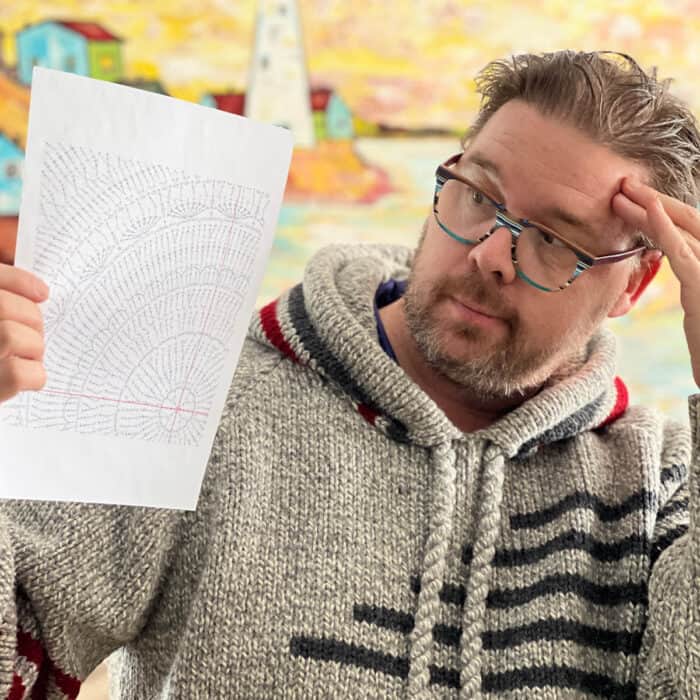
Standard Crochet Diagram Symbols Downloadable
You can download this worksheet to accompany your crochet patterns. A good pattern usually includes a stitch key that explains each symbol.
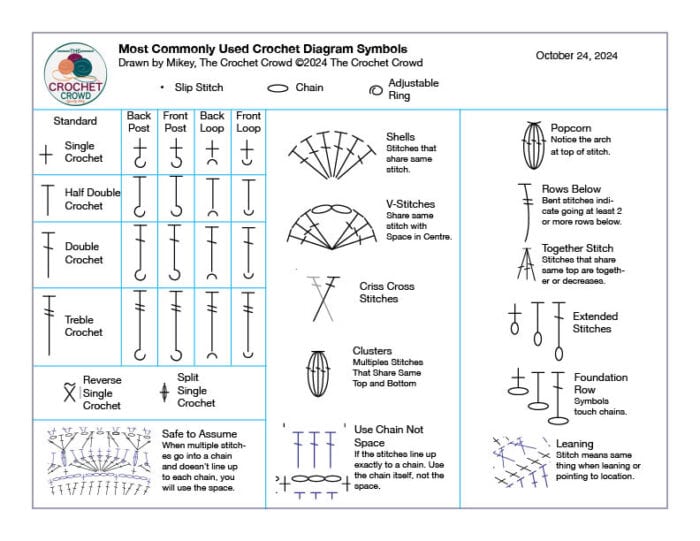
Crochet Diagram Collection of Designs
Our Pinterest page has an entire collection of computer-generated crochet diagrams. Many more were drawn with pencils and left out of the collection. There are over 150 crochet diagrams on file.
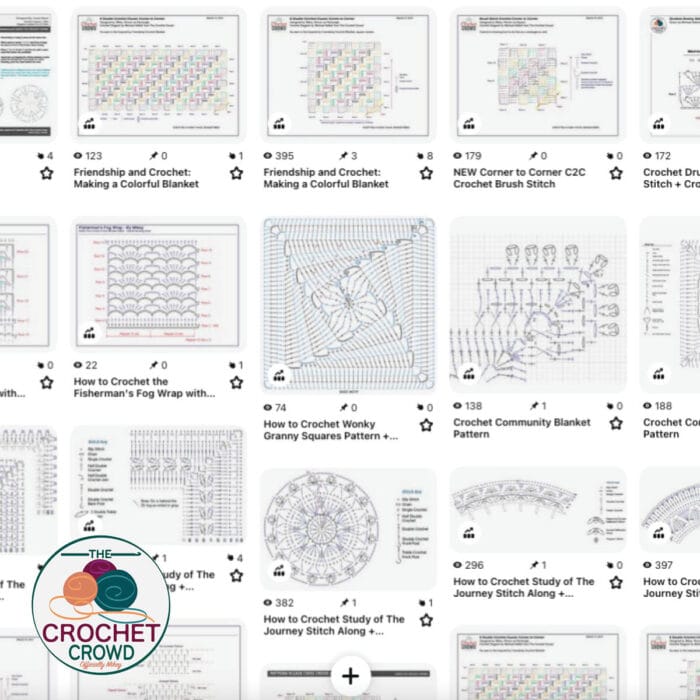
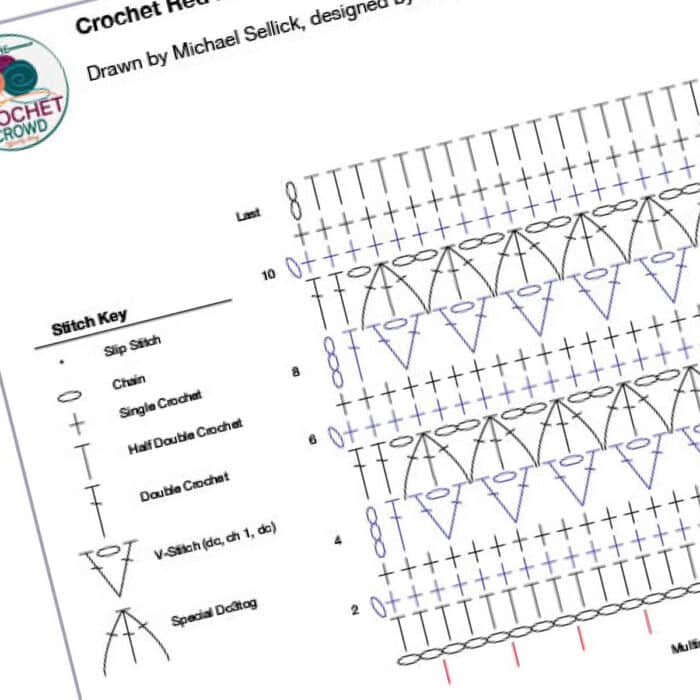
Reading isn't my strong suit, and it's still not today. Look at my grammar, and you can see I am not kidding.
I learned to crochet through reading the diagrams as I understood what the symbols meant. Using a stitch key, I taught myself pretty quickly.
TIP: Give yourself time to develop the skill to read the diagrams. Once you get it, patterns across the globe will open up to you without ever having to know the language the designer is speaking.
The video below is a comprehensive look at reading crochet diagrams. I start back at the very beginning and work towards getting more complicated. Everything from how to read them, symbols, and so much more. The video has 15 segments. I provide the minute marker near the beginning of the tutorial so you can fast forward if you want to see particular elements and learn specific information.
Video Tutorial
Learning crochet is not a race, enjoy the journey.
This is How Mikey Makes The Diagrams
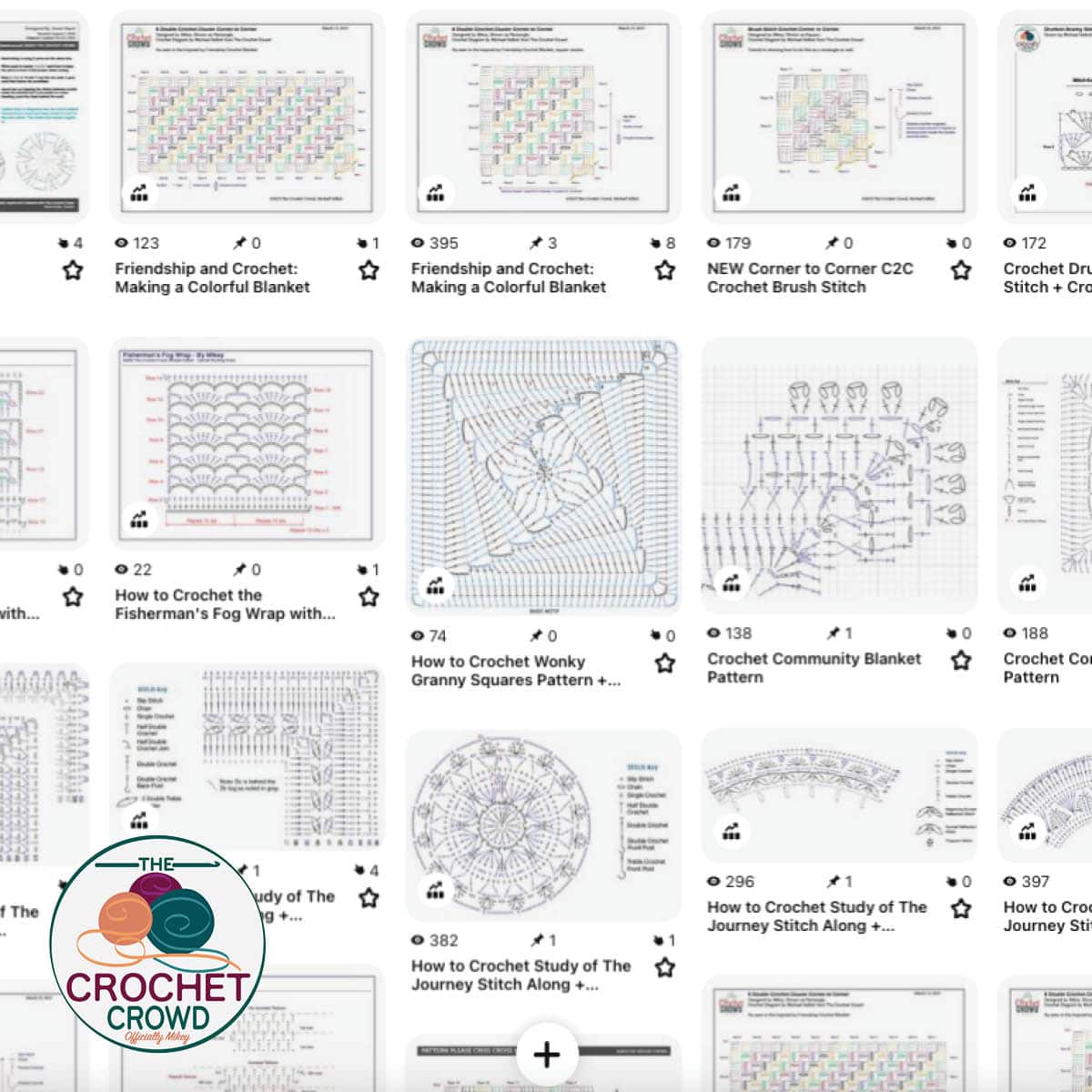
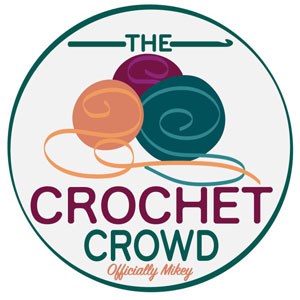
Anna Malecki says
I like
The pattern. Is there a written instruction??? Thank you
Diana says
Search for Crazy Eight Shawl on this site. It has diagrams and written instructions.
Pauline Johnston says
Fantastic tutorial. Thank you so much Mikey.
Bettyboo says
The trouble is that every key to learning teaches you how to read the perfect chart. In real life they aren't like that. They don't tell you where to place stitches, there are slip stitches shown which appear to sit in thin air. There are petals made that look like they are made in a single round but made in two. Charts in real books or online are often made up of tiny symbols which you need a magnifying glass to see how many chains there are. In perfect charts there is a number indicating the number of chains, in real diagrams you have to count them one by one. It's slow and laborious to decipher many charts. With some things they are good to use, with many not a good option at all.
As for crochet symbols being a universal language. No, not so much. The important information pertaining to bits and pieces that are vital to understanding are indecipherable as they are in Japanese or Russian. Basic motifs are fine but anything with construction information or different symbols to those 'universal ones' then it just doesn't work. With written instructions you just do what it tells you! Bad written patterns exists which don't tell you the where what or how either but there are likely to be in our own language so it is easier to find help with them.
Sometimes when written instructions are not so good, I would love a chart but far more often the chart is crying out for words to go with it. Why can't we have both? It annoys me greatly. We pay for patterns, yet we get told we can't have the whole crochet chart as it takes up so much room, so then we are dependant on recognising patterns and sequencing which is incredibly difficult if you just don't have those skills because you are not mathematically gifted, just to complete your own way around a chart. If I pay for a pattern I want all of it! If a couple of words can help me out about where to put the hook, use them. Stop skimping on the quality! I would rather 6 patterns in a book that worked beautifully than 20 all squeezed together which I end up not being able to do because of lack of full instruction or they haven't been checked over properly as the words are edited down from the original proof and now don't make sense.
So basically chart patterns as an add on unless they are done properly with explanations and they are best served up with written instructions. At best too much guess work is used. I just saw some instructor say, 'oh with a chart you can put your hook in the chain space or the chain, it's up to you!' There was a way the creator did it and words tell you that and I want to know too! It's fine if you want to be creative but if you want to replicate exactly the same over again and as intended, certain information is needed.
You need an awful lot of information about chart reading to have adequate skills to replace, words. Many course, books etc. don't really get past basic stitches in granny squares. It gets REALLY complicated but the info just isn't there. You catch bits here and there but ultimately it's all a bit pointless anyway as most books in English are all written anyway. And like I said it isn't much good by itself.
shellyscorner says
Betty Boo ~ I agree 100% with you!